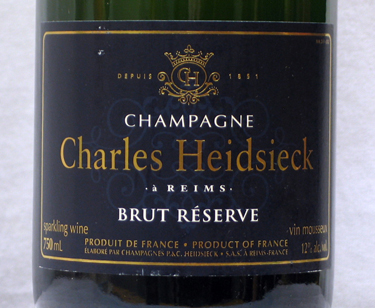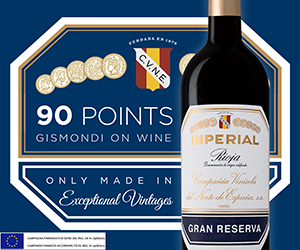What will you be drinking on New Year's Eve?
Convention says sparkling wine, and I say why mess with tradition? As suggested earlier this year, under the new 0.05 drinking-and driving regulations most of us will be partying at home where there is no added markup to the price of wine. That means the world's best sparkling wine, Champagne, is essentially half the price it would be if you ordered it in a restaurant or hotel. So why not make this New Year's a Champagne affair?
The short course in Champagne is that it is all about style. I know we are not supposed to use words like style when we write about wine because it means different things to different people. But like it or not, Champagne has style and if you taste enough, or simply pay attention to what comes your way over the years, you too will come to recognize that the "style" of, say, a Pol Roger is different from the style of Veuve Clicquot.
It's the subtle distinctions that are the basis of all comparisons for Champagne. Ultimately, the nuances establish a Champagne producer's "house" style, be it the light and ethereal, the rich and robust, the heavy or the toasted/biscuity style or the fresh, mineral citrus offerings.
Blending is at the heart of any Champagne's style and it begins with the fruit. There are three major grapes used in Champagne and it's the mix of the trio that ultimately defines every house style. When Pinot Noir dominates the blend, the wine is noticeably richer. The extra body and weight that stem from the power of Pinot Noir also lend the sparkler the ability to age longer in the bottle, further increasing the complexity and power of the wine.
If Chardonnay is the focus, the wines tend to have a leaner structure that often appears lighter and creamier in the mouth. Elegance and finesse are the hallmarks of exceptional Chardonnay and with few exceptions this style is often better appreciated when young, at least here in North America.
Pinot meunier is the region's swing grape. In essence, it is the fruit component that, while never as prominent in Champagne as it might be in sparkling wines from the United States or Australia, it does play an important role in the final assemblage or blend.
This week I wanted to explore the broad category of Champagne known as non-vintage Brut. Interestingly, the somewhat derogatory term nonvintage is an expression many Champagne houses are moving away from, preferring instead to describe these sparkling jewels for what they are: multi-vintage, multi-blended wines in effect containing different grapes, from scores of vineyards that more often than not contain one or more years of reserve wine.
It's the flexibility to add older wines and draw from a diverse range of vineyards that allows each Champagne house to reproduce a consistent taste and or house style year in and year out -not unlike a fine cognac or blended whiskey. What follows is a review of some of the more popular nonvintage blends in the market.
Nicolas Feuillatte Brut Premier Cru Reserve Particulière N/V is a great bet. So fresh and crisp with nutty, baked apple, light cherry aromas and citrus, green apple skin, dried pear and hazelnut flavours throughout. We love the delicacy and finesse of this bubble, which will accompany a wide range of food.
The Louis Roederer Brut Premier Champagne N/V is similarly styled with a nutty, creamy, strawberry, baked apple nose, a crisp, creamy mousse and a toasty nutty, strawberry, orange, baked pear flavour. Its clean crisp biscuity finish makes you want to simply keep sipping it. Try this with smoked salmon and a dash of horseradish cream.
The party fizz for the younger crowd is Piper-Heidsieck Brut N/V with its bright red label. Expect the toast and cherries combination with tight acidity and baked green apple skin, citrus, quince and strawberry flavours. Try it with fresh cracked crab or grilled prawns.
My current favourite brut Champagne is the Charles Heidsieck Brut Reserve N/ V. The nose of baked brioche and honey is worth the price of admission as are its lengthy citrus, baked apple, pear, cherry and slightly tropical flavours. An impressive fresh mouth-filling bubble that over-delivers for the price.
Moet & Chandon Brut Imperial N/V has a light, consistent, fine mousse that reflects its Chardonnay, Pinot Noir, Pinot meunier blend. Considered a fruity style sparkler by Moet, it mixes notes of green-apple and lime on the nose with a touch of hazelnut and cherry. Round and fresh, look for bits of honey, baked apple, citrus and mineral flavours in a full-bodied style. Try it with cheese cookies.
Among the bigger bruts is Veuve Clicquot Brut N/ V. This big toasty N/V brut defines house style thanks to the addition of some 25 to 40 per cent reserve wine in each edition. The richness and weight come from its higher Pinot Noir addition (as much as 50 to 55 per cent). Look for a sweet creaminess with more citrus, nutty, cherry, mineral flavours with a touch of orange on the finish. You can age this a year or five.
Happy New Year, and keep safe.
NON VINTAGE BRUTS
Nicolas Feuillatte Brut Premier Cru Réserve Particulière N/V, Champagne, France
Price $60
UPC 3282946006835
Score 91/100
Remarks Good finesse and balance in a style that will accompany a wide range of food.
Louis Roederer Brut Premier Champagne N/V, Champagne, France
Price $68
UPC 3114080016053
Score 91/100
Remarks Always consistent showing floral, citrus, nutty, strawberry, baked apple notes.
Piper-Heidsieck Brut N/V, Champagne, France
Price $57
UPC 3018334100003
Score 89/100
Remarks Very crisp, dryer, lighter style with a slightly austere finish.
Charles Heidsieck Brut Reserve (Dégorgement 2009) N/V, Champagne, France
Price $61
UPC 03037900002787
Score 92/100
Remarks Impressive fresh mouth-filling bubble that over-delivers for the price.
Moët & Chandon Brut Impérial N/V, Champagne, France
Price $65
UPC 3185370000335
Score 90/10
Remarks Baked apple, citrus and mineral flavours. Try it with cheese cookies.
Veuve Clicquot Brut N/V, Champagne, France
Price $69
UPC 3049610004104
Score 90/100
Remarks Clicquot defines its house style with 25 to 40 per cent reserve wine in each edition.

 quicksearch
quicksearch






